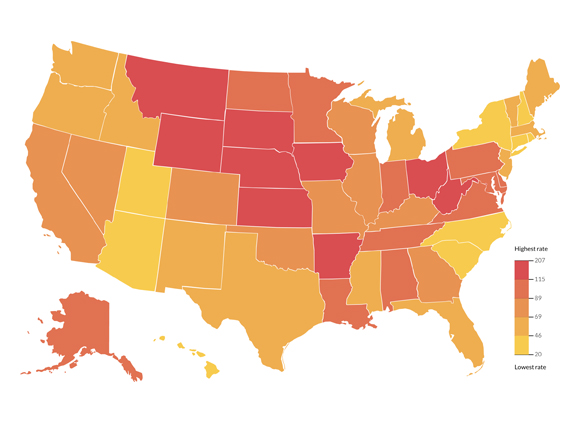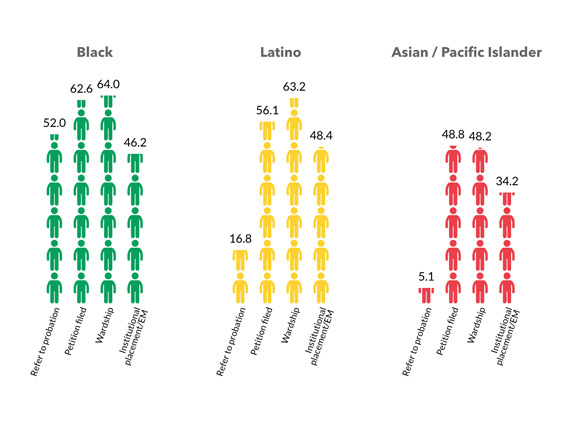The W. Haywood Burns Institute (BI) is a national nonprofit organization that works to reduce racial and ethnic disparities in the justice system and advance the well-being of people of color.
Across the country, advocates and legislators pushing for policy reform lack access to key data about the youth justice system. The problem has two components: 1) Lack of access to justice data and 2) difficulty understanding and analyzing data efficiently, given limited resources. BI currently has two data tools that help users access and analyze youth justice data. We hope to add more in the future.
United States of Disparities
BI’s “United States of Disparities” tool allows for customizable searches that illustrate the extent of racial and ethnic disparities in the use of incarceration in each state and nationwide. There are additional state and county level data available by clicking on any state. Data are from the U.S. Office of Juvenile Justice and Delinquency Prevention.
State of Disparities: California
BI’s State of Disparities: California tool allows for customizable searches to better understand the extent of racial and ethnic disparities in counties across California. You can customize data by variables including race/ethnicity, gender, geography, age, most serious offense, year, and decision-point.


